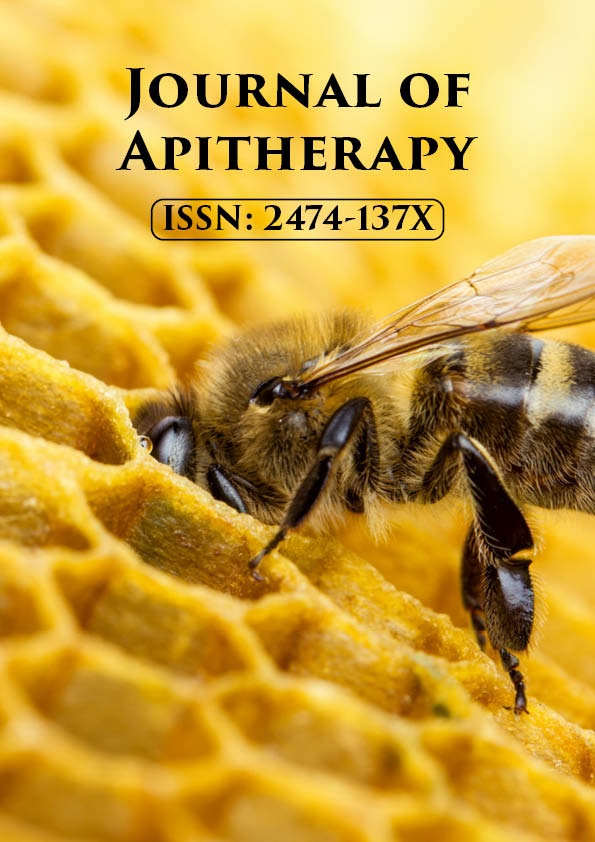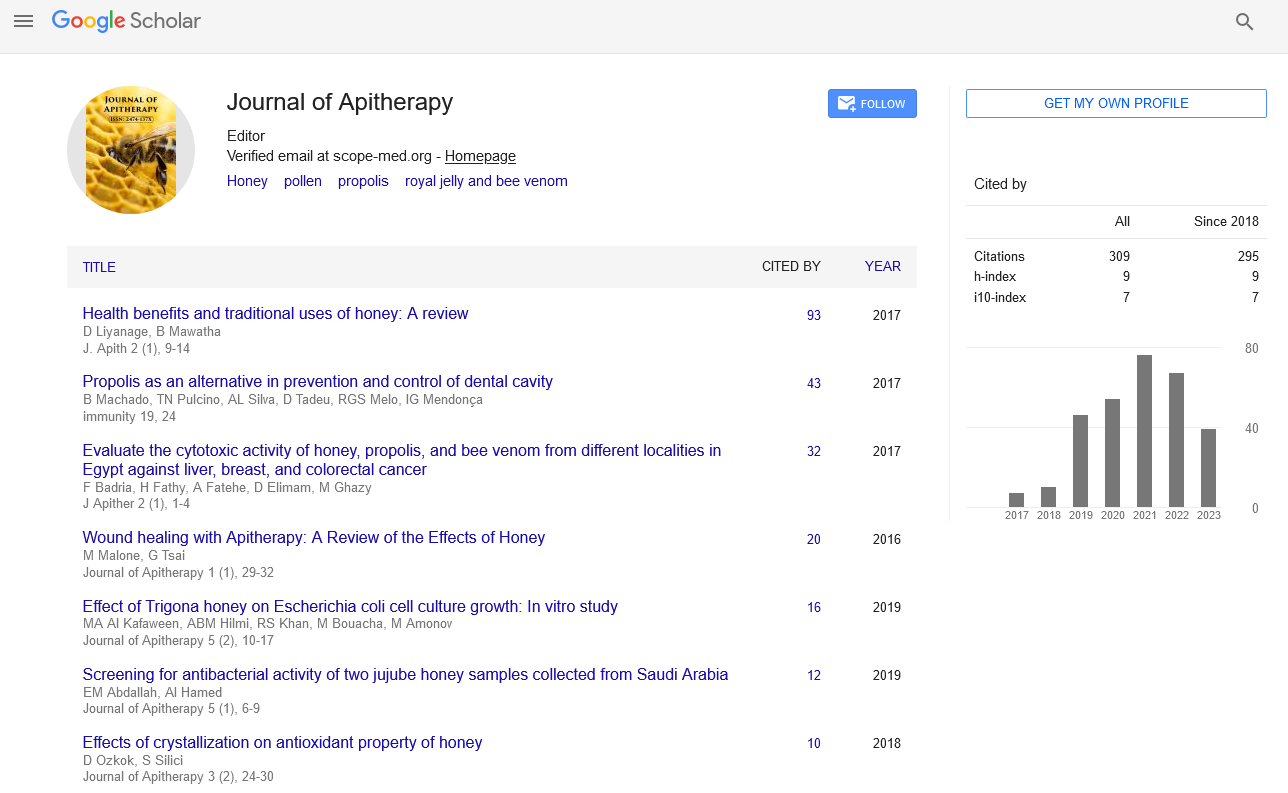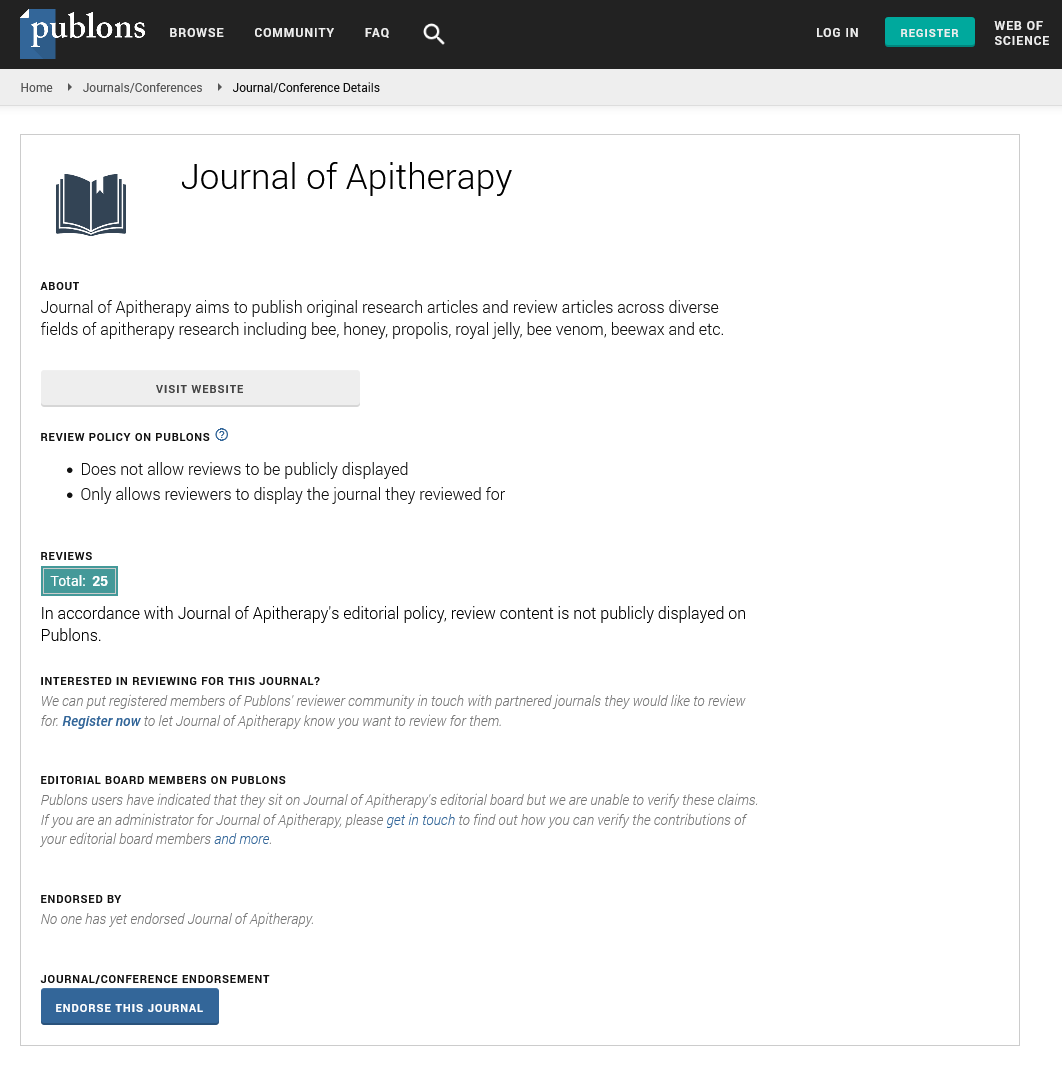Perspective Article - Journal of Apitherapy (2022)
Benefits of Honey in Human Health
Fariborz Samini*Fariborz Samini, Department of Medical Sciences, University of Texas, Neyshabur, Iran, Email: samarghandians@mums.ac.ir
Received: 01-Feb-2022, Manuscript No. JAPITHERPAY-22-56197; Editor assigned: 03-Feb-2022, Pre QC No. JAPITHERPAY-22-56197 (PQ); Reviewed: 18-Feb-2022, QC No. JAPITHERPAY-22-56197; Revised: 23-Feb-2022 Published: 02-Mar-2022
Description
The chemical composition of honey depends on the type of flower, the atmosphere and the location. Sugars make up the majority of honey’s composition and are responsible for its sensory and physicochemical qualities in the food sector. Non-sugar components are the key contributors to honey’s health benefits, even though they are present in little amounts. Polyphenols, for example, are active components and antioxidants found in honey. Polyphenols are phytochemicals, which is a broad name for the thousands of plant-based compounds that have antioxidant characteristics. Many invitro studies in human cell cultures, as well as much animal research, show that polyphenols protect against a variety of diseases, including cardiovascular disease, diabetes, cancer, neurodegenerative diseases, lung diseases, and liver diseases. Nonetheless, determining the particular molecular mechanism underpinning individual polyphenols, as well as how polyphenols affect human health, is difficult. Honeys offer distinct organoleptic qualities, as well as nutritional and health benefits, which are highly valued by customers in the culinary, pharmaceutical, and cosmetic industries. Honey’s composition varies by geography, depending on the vegetation in the area, allowing it to be classified by source or type. Honeys that are monofloral have a higher market value than honeys that are multifloral. Honey has a distinct scent that comes from a combination of volatile chemicals that are present in low concentrations. Due to the various types of adulteration that might occur, the authentication of honey’s complex matrix according to its botanical and/or geographical origin is a difficulty nowadays, leading to the quest for accurate marker components for the various monofloral honeys. As a natural food supplement, honey has a variety of medical and health benefits. It has been identified as a possible therapeutic antioxidant agent for a variety of biodiverse diseases. It has antibacterial, anti-inflammatory, antifungal, antiviral, and antidiabetic properties, according to research. Immunomodulatory, estrogenic regulating, ant mutagenic, anticancer, and a variety of other vigour effects are all retained. Honey is a natural ingredient that has been used for medicinal purposes since ancient times. Because of the significant antioxidant and anti-inflammatory characteristics of flavonoids and phenolic acids, they play an important role in human health. Honey has antibacterial and anticancer properties against a variety of malignancies, working on a variety of molecular pathways involved in cellular proliferation. In addition, the reduction of glucose, fructosamine, and glycosylated haemoglobin serum concentrations has been emphasised as an antidiabetic activity. Honey also protects the cardiovascular system by preventing the oxidation of low-density lipoproteins, the neurological system, and the respiratory system by preventing asthma and bacterial infections, and the gastrointestinal system. Honey has long been utilised in folk medicine, but the health benefits were only recently discovered when the scientific community became interested in testing and explaining the benefits of honey. Honey is becoming more widely recognised as a possible therapeutic agent for wound infections. There is an immediate need to identify and evaluate the antibacterial activities of honeys that have not yet been tested against wound infections. Honey is one of the most popular and valuable natural products that has been introduced to humanity since the dawn of time. Honey is utilised not only as a nutritional food, but also as an alternative treatment for clinical diseases ranging from wound healing to cancer treatment, as stated in traditional medicine.
Copyright: © 2022 The Authors. This is an open access article under the terms of the Creative Commons Attribution NonCommercial ShareAlike 4.0 (https://creativecommons.org/licenses/by-nc-sa/4.0/). This is an open access article distributed under the terms of the Creative Commons Attribution License, which permits unrestricted use, distribution, and reproduction in any medium, provided the original work is properly cited.







